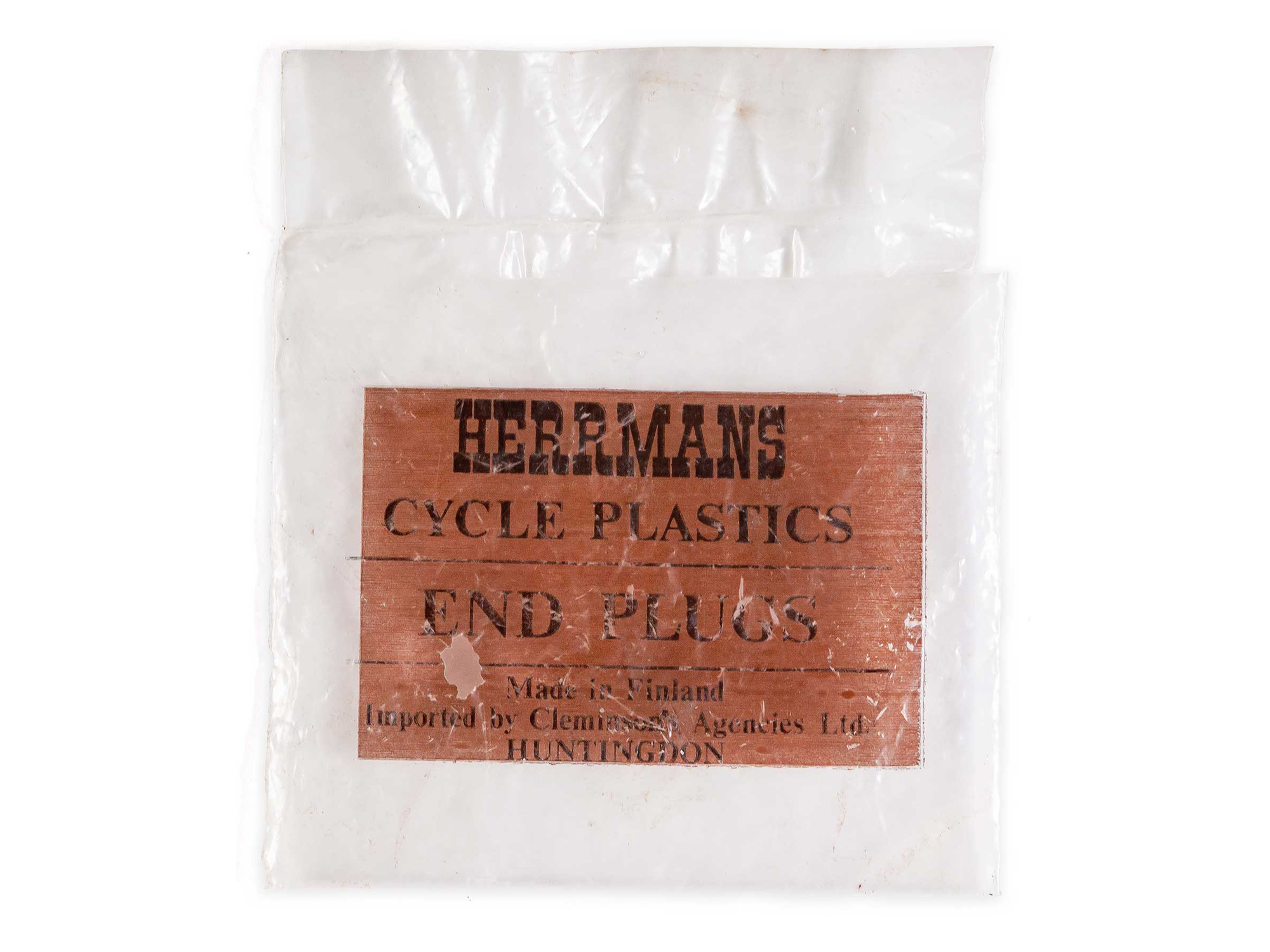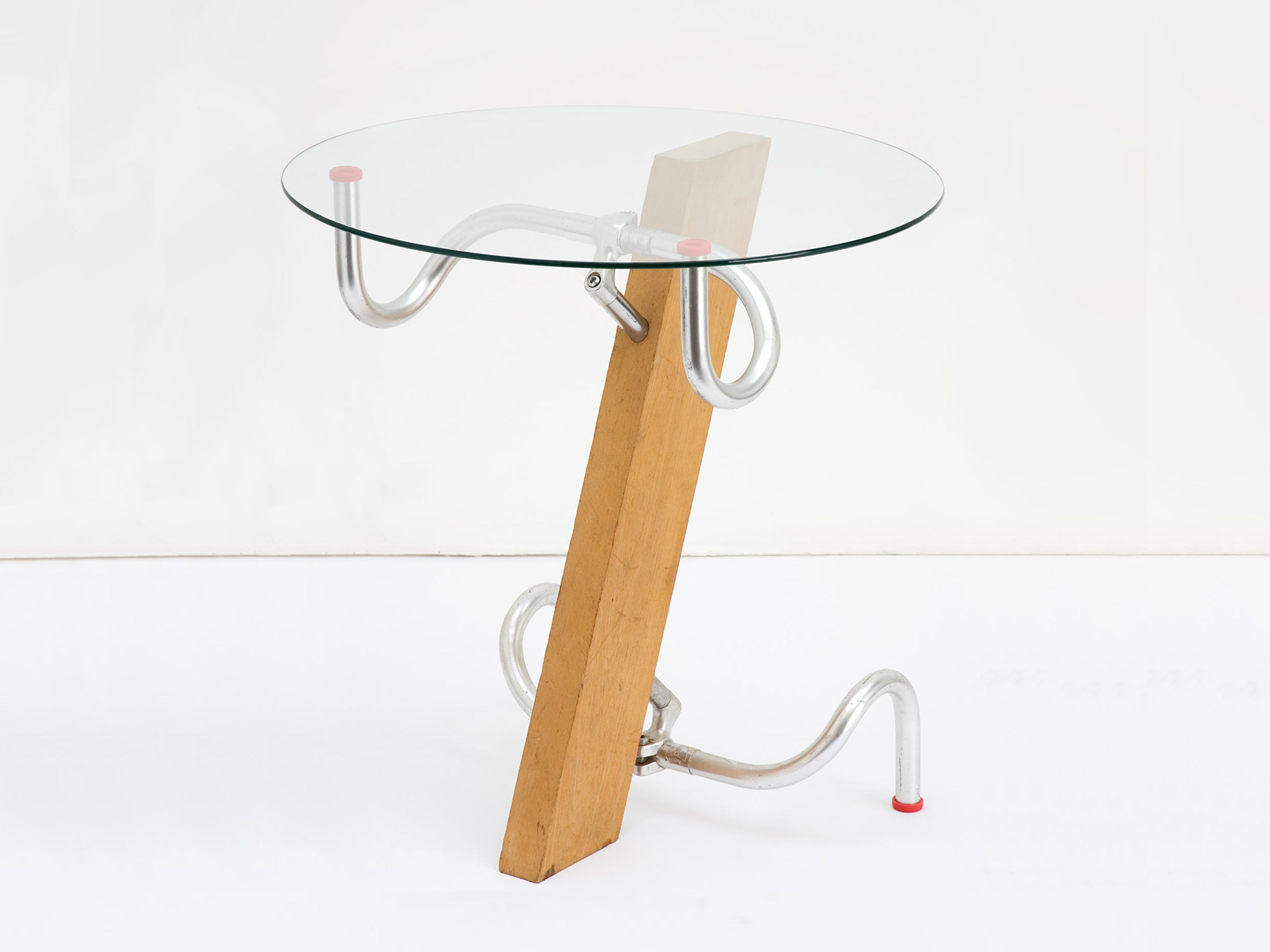Jasper developed the Handlebar Table at home in January 1982, in his final year at Kingston. It was ‘a product requiring minimal machining or manual labour to produce’ – a solution to the unhelpfulness of Kingston’s metalwork technician. In one early model – now lost but shown below – he painted the handlebars and also the wood to hide its poor quality. He showed sketches and photographs of it as part of his graduate exhibition at Kingston in June 1982. In July, he showed it at the Coexistence shop in London, and sold it in an edition of ten. The Design Museum purchased one of the ten in 2012.
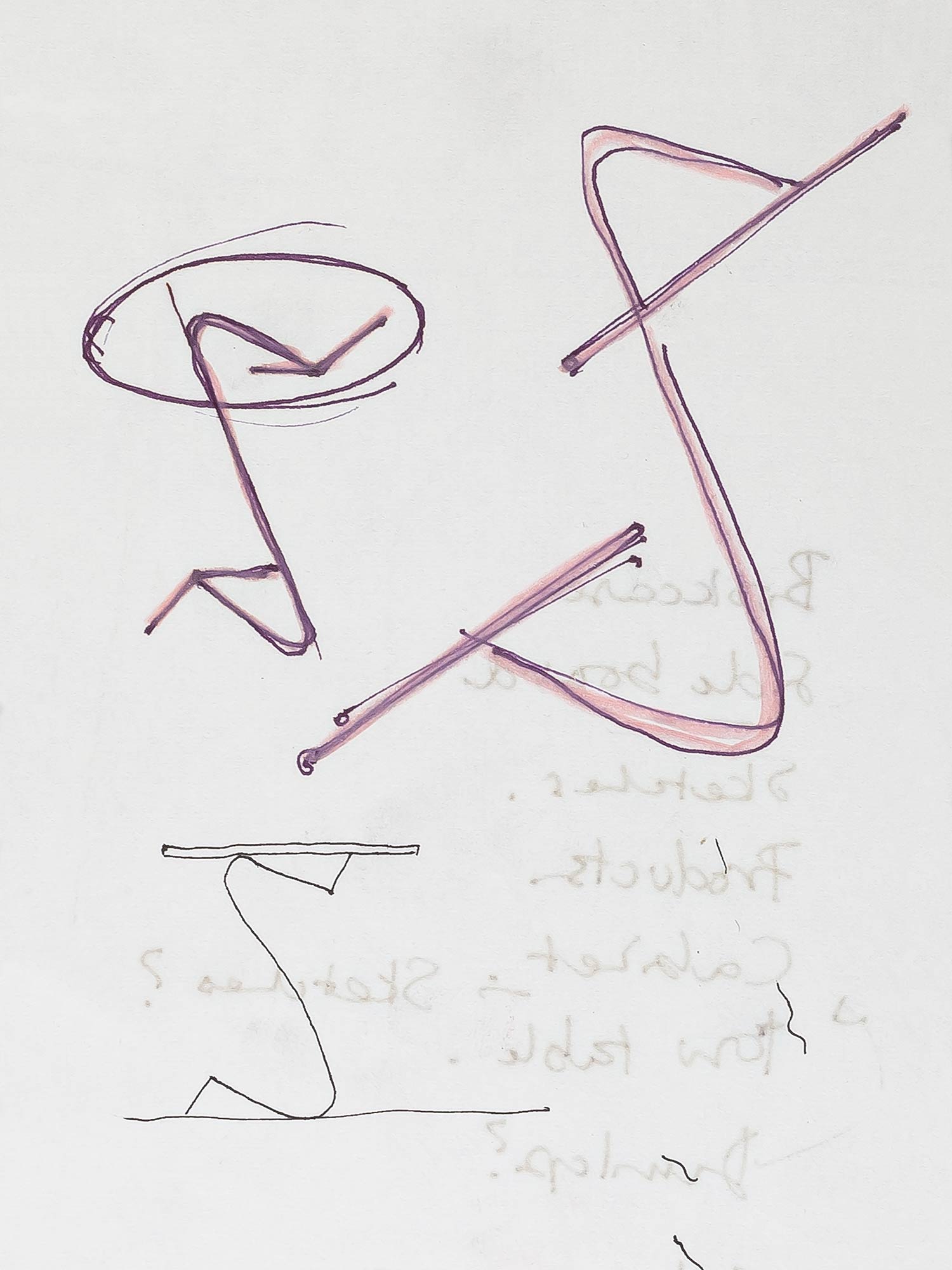
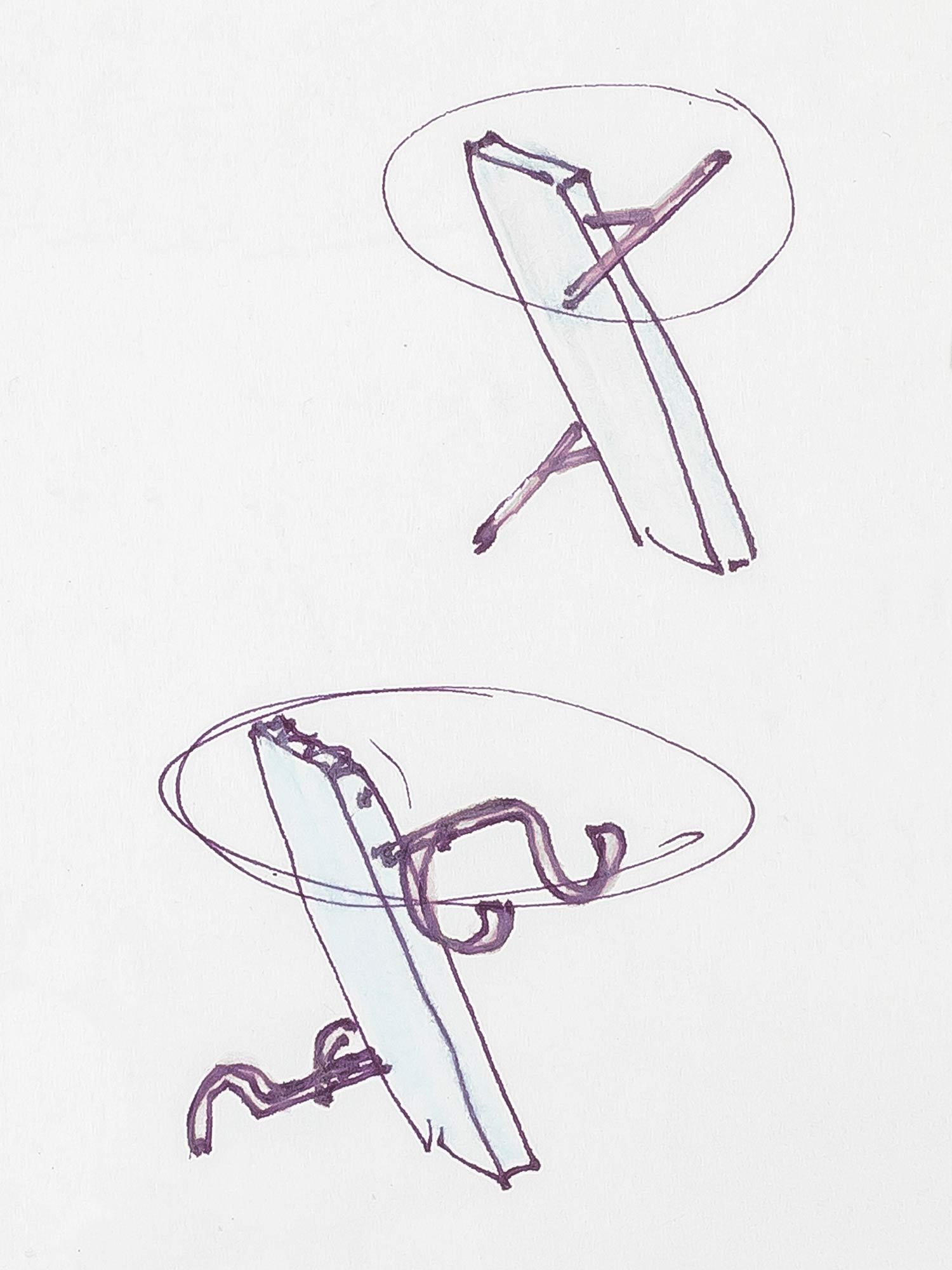
The Handlebar Table was one of my earliest designs, certainly the first ‘commercial’ project. I had read somewhere that Marcel Breuer had the idea for a chair in bended tubular steel after seeing some racing handlebars and in the spirit of the ready-made it seemed appropriate to use the handlebars themselves.
I showed the table for my degree show at Kingston and then I made it as an edition of ten for the exhibition at Coexistence. The components cost me £20 each and I sold the tables for £100, which seemed like a good business at the time. I made them at college with a technician’s help on the wooden parts. The last one wasn’t sold because the wood had a knot. I still have that one.
Looking back at it now I would say the most relevant and important success of the design for my future development was the successful combination of the three materials – wood, aluminium and glass – in their natural states. The somewhat eccentric shape of the table itself was fitting to the mood of the time and my own frame of mind. A kind of poetic, anti-establishment, business-like attitude!
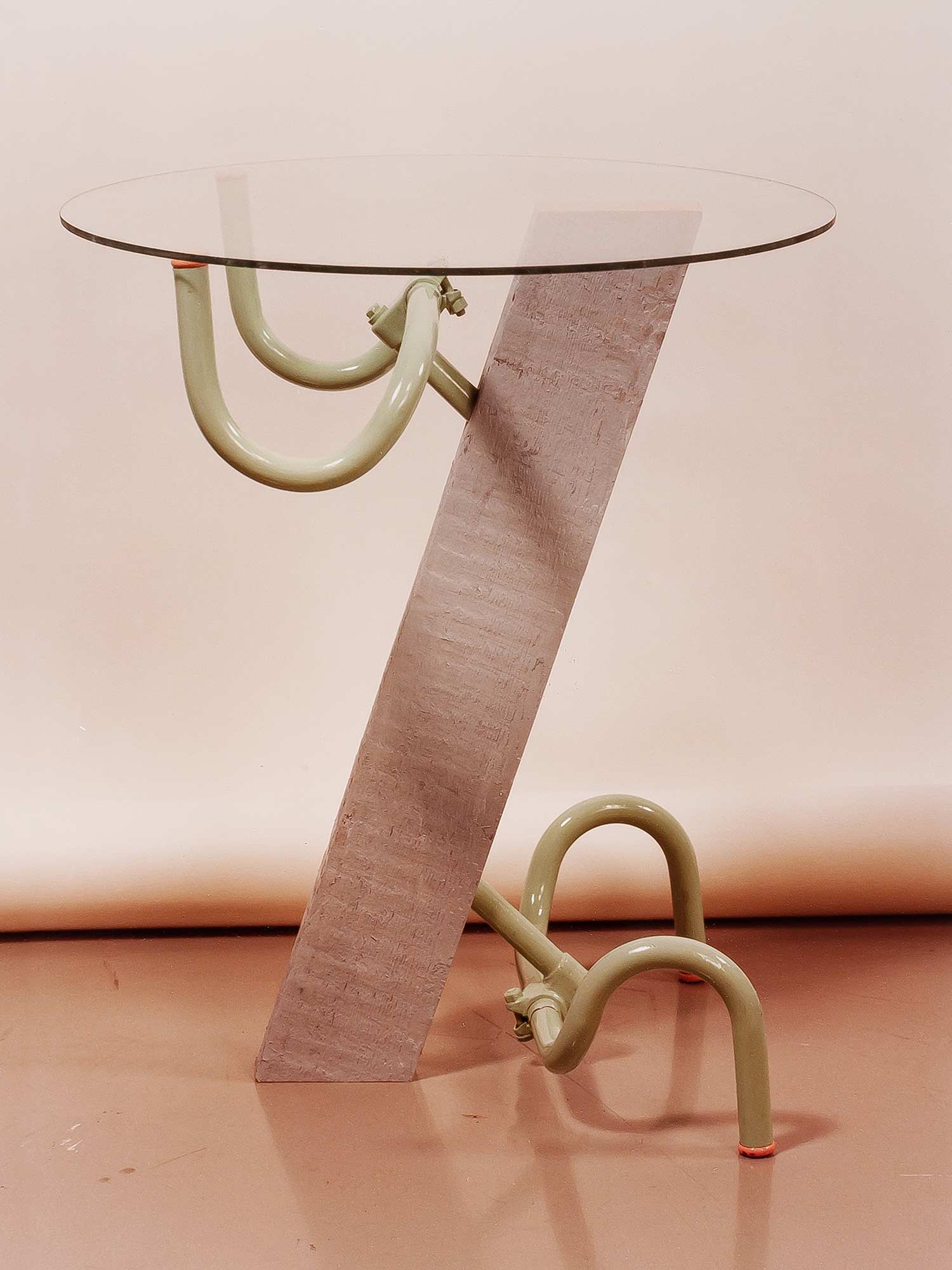
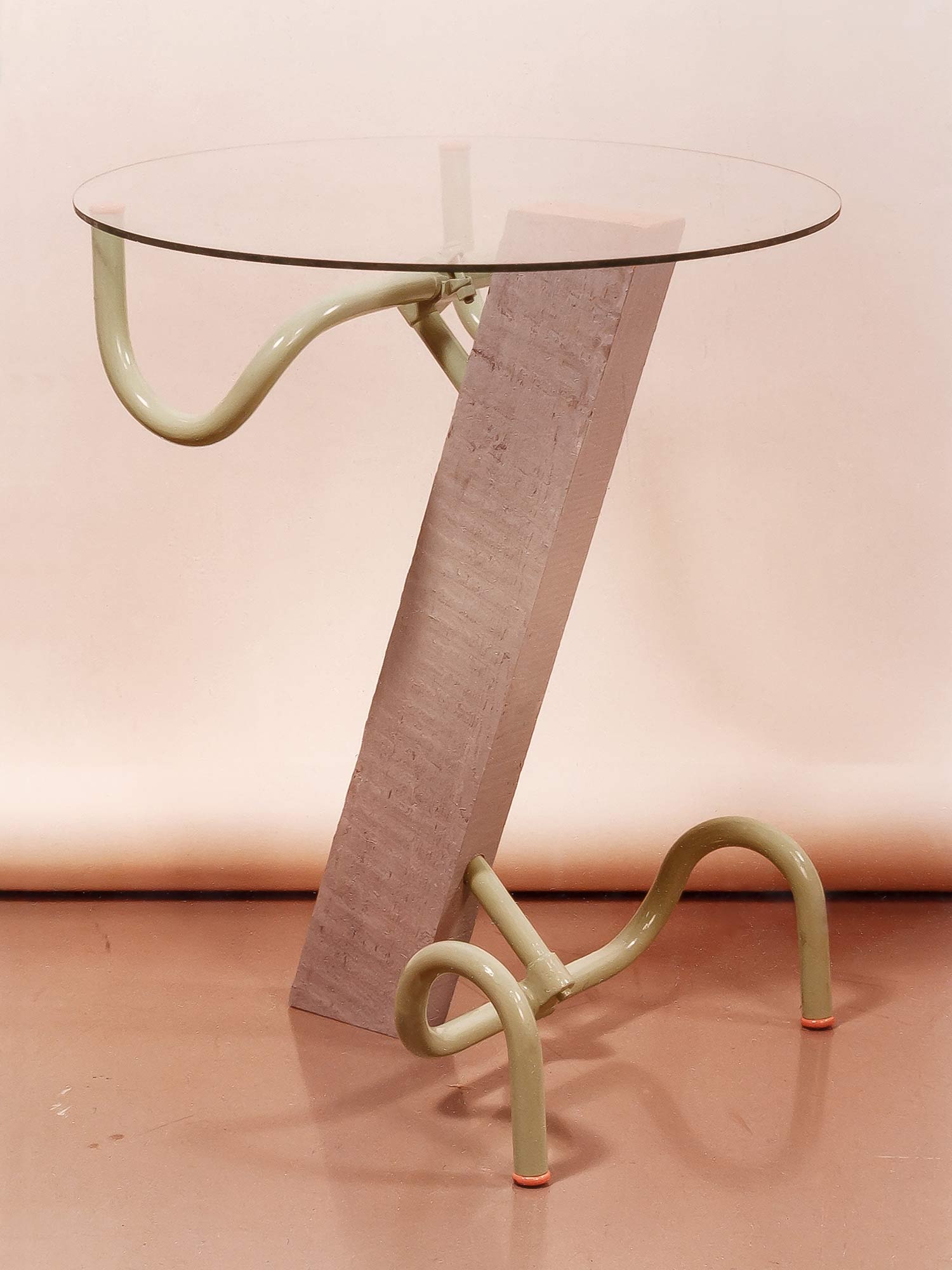
This is the bag for the red end plugs that Jasper used for the Handlebar Table:
